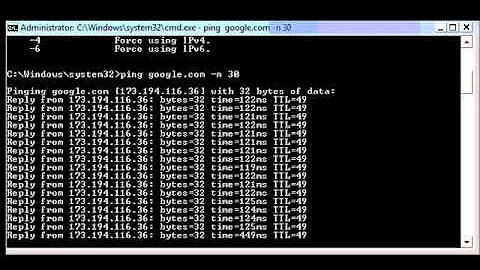What's the minimum network latency for a 1000 km connection using optic fibers?
Solution 1
A typical index of refraction for optical fiber is 1.62, therefore the speed of light in a fiber is approximately 3e8 m/s / 1.62 = 1.85e8 m/s. Therefore it would take at least 1000000 m /1.85e8 m/s = 0.0054 s to travel that distance. Note that this value doesn't cover the extra distance traveled by the light from bouncing side to side.
Solution 2
Distance Delay is simply the minimum amount of time that it takes the electrical signals that represent bits to travel down the physical wire. Optical cable sends bits at about ~5.5 µs/km, copper cable sends it at ~5.606 µs/km, and satellite sends bits at ~3.3 µs/km. (There are a few additional microseconds of delay from amplifying repeaters in optical cable, but compared to distance, the delay is negligible.)
source: http://www.networkperformancedaily.com/2008/06/latency_and_jitter_1.html
Related videos on Youtube
Jader Dias
Perl, Javascript, C#, Go, Matlab and Python Developer
Updated on September 18, 2022Comments
-
Jader Dias almost 2 years
I know most of the network latency for short distances is due to router processing times. But for longer distances the speed of light also counts. And it's different from the speed the light in the vacuum. What is it?
-
Jader Dias about 13 yearsrelated question serverfault.com/questions/61719/…
-
-
Jader Dias about 13 yearsI expect more than this theoretical 5.4 ns/m, isn't there any source that says what actual latencies are?
-
Jader Dias about 13 yearsAnd fiber cables aren't laid in straight lines neither.
-
akappa about 13 years@Jader, lol, first you ask for "minimum network latency" and then you complain they aren't realistic enough? You must be confused.
-
Jader Dias about 13 years@akappa I'm not confused. I'm asking the the "minimum network latency", not the "minimum latency through an ideal-but-yet-not-manufactured-medium"
-
akappa about 13 yearsThe fact that "fiber cables aren't laid in straight lines" has nothing to do with fiber technology. As for the actual speed of light in the medium, the informations you can find in the linked wikipedia article is more than adequate.
-
Jader Dias about 13 years@akappa but not adequate enough to figure out the speed taking the internal reflections in account
-
akappa about 13 years@Jader Dias: those are taken into account by the refractive index.
-
akappa about 13 yearsFrom en.wikipedia.org/wiki/Refractive_index : The refractive index or index of refraction of a substance is a measure of the speed of light in that substance. It is expressed as a ratio of the speed of light in vacuum relative to that in the considered medium.
-
akappa about 13 years@Jader Dias: also take a look at that: en.wikipedia.org/wiki/Snell%27s_law , hope this clears your confusion
-
Jader Dias about 13 years@akappa I thought in pointing the same articles to you. I hope you read them. Where the hell did you get the idea that the refractive index take in account the internal reflections?
-
Jonas Heidelberg about 13 years@Jader Dias is right on that last point - the refractive index is a property of bulk material and can't take reflections into account. The actual delay factor due to these reflections depends on the angle of light rays entering the fiber. The maximum angle is determined by the NA of the fiber. Note that for thin (single-mode, less than 10 lambda diameter) fibers it doesn't even make sense to think about light rays bouncing around in the fiber... see en.wikipedia.org/wiki/Optical_fiber#Single-mode_fiber




